Weston Road, Southend-on-Sea, Southend-on-Sea, SS1 1AS
This pub is a listed building and a typical Edwardian head post office, built in the years leading up to World War I.
Illustrations and text about the history of Southend.
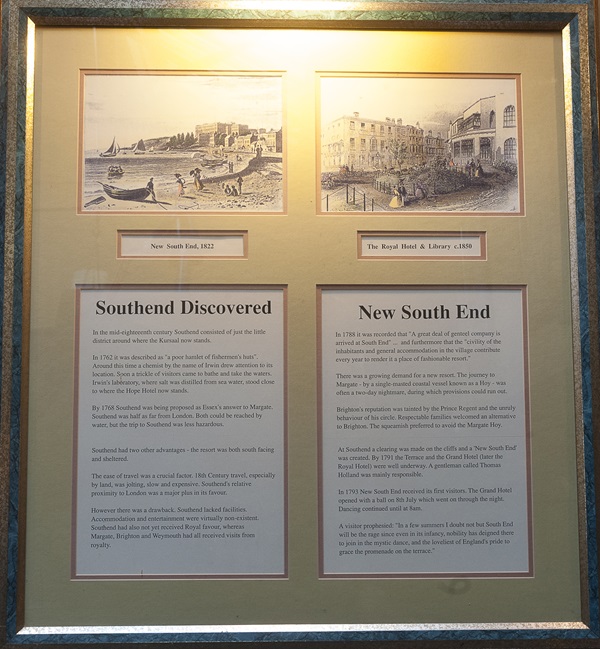
The text reads: Southend Discovered
In the mid-eighteenth century Southend consisted of just the little district around where the Kursaal now stands.
In 1762 it was described as “a poor hamlet of fishermen’s huts”. Around this time a chemist by the name of Irwin drew attention to its location. Soon a trickle of visitors came to bathe and take the waters. Irwin’s laboratory, where salt was distilled from sea water, stood close to where the Hope Hotel now stands.
By 1768 Southend was being proposed as Essex’s answer to Margate. Southend was half as far from London. Both could be reached by water, but the trip to Southend was less hazardous.
Southend had two other advantages – the resort was both south facing and sheltered.
The ease of travel was a crucial factor. 18th century travel, especially by land, was jolting, slow and expensive. Southend’s relative proximity to London was a major plus in its favour.
However there was a drawback. Southend lacked facilities. Accommodation and entertainment were virtually non-existent. Southend had also not yet received Royal favour, whereas Margate, Brighton and Weymouth had all received visits from royalty.
New South End
In 1788 it was recorded that “A great deal of genteel company is arrived at South End” … and furthermore that the “civility of the inhabitants and general accommodation in the village contribute every year to render it a place of fashionable resort”.
There was a growing demand for a new resort. The journey to Margate – by a single-masted coastal vessel known as a Hoy – was often a two-day nightmare, during which provisions could run out.
Brighton’s reputation was tainted by the Prince Regent and the unruly behaviour of his circle. Respectable families welcomed an alternative to Brighton. The squeamish preferred to avoid the Margate Hoy.
At Southend a clearing was made on the cliffs and a ‘New South End’ was created. By 1791 the Terrace and the Grand Hotel (later the Royal Hotel) were well underway. A gentleman called Thomas Holland was mainly responsible.
In 1793 New South End received its first visitors. The Grand Hotel opened with a ball on 8 July which went on through the night. Dancing continued until 8am.
A visitor prophesied: “In a few summers I doubt not but South End will be the rage since even in its infancy, nobility has designed there to join in the mystic dance, and the loveliest of England’s pride to grace the promenade on the terrace.”
Photographs, illustrations and text about the two South Ends.
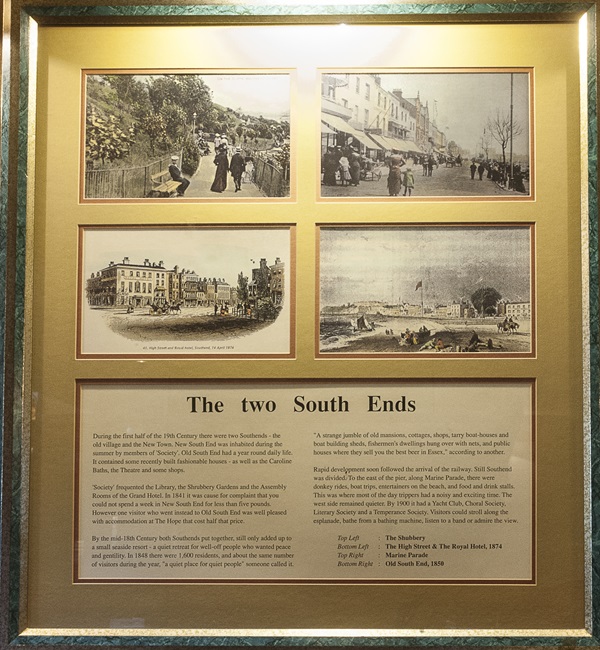
The text reads: During the first half of the 19th century there were two Southends – the old village and the New Town. New South End was inhabited during the summer by members of ‘Society’. Old South End had a year round daily life. It contained some recently built fashionable houses – as well as the Caroline Baths, the Theatre and some shops.
‘Society’ frequented the Library, the Shrubbery Gardens and the Assembly Rooms of the Grand Hotel. In 1841 it was cause for complaint that you could not spend a week in New South End for less than five pounds. However one visitor who went instead to Old South End was well pleased with accommodation at The Hope that cost half the price.
By the mid-18th century both Southends put together, still only added up to a small seaside resort – a quiet retreat for well-off people who wanted peace and gentility. In 1848 there were 1,600 residents, and about the same number of visitors during the year, “a quiet place for quiet people” someone called it.
“A strange jumble of old mansions, cottages, shops, tarry boat-houses and public boat building sheds, fishermen’s dwellings hung over with nets, and public houses where they sell you the best beer in Essex.” according to another.
Rapid development soon followed the arrival of the railway. Still Southend was divided. To the east of the pier, along Marine Parade, there were donkey rides, boat trips, entertainers on the beach, and food and drink stalls. This was where most of the day trippers had a noisy and exciting time. The west side remained quieter. By 1900 it had a Yacht Club, Choral Society, Literary Society and a Temperance Society. Visitors could stroll along the esplanade, bathe from a bathing machine, listen to a band or admire the view.
Top left: The Shubbery
Bottom left: The High Street & The Royal Hotel, 1874
Top right: Marine Parade
Bottom right: Old South End, 1850.
Photographs of the Kursaal, Southend, c1905.
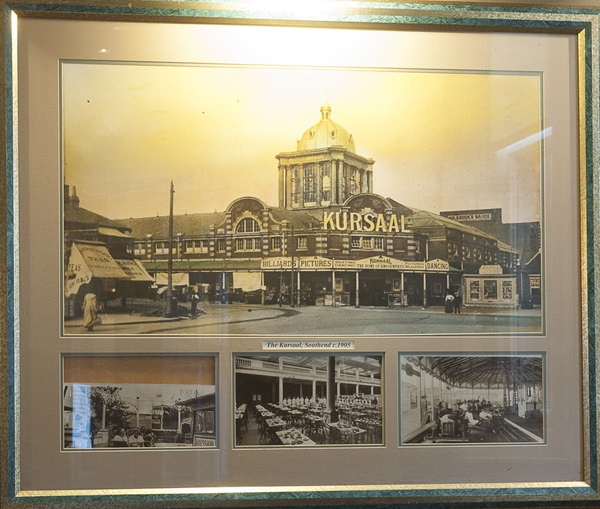
Photographs of the Palace Hotel, c1906.
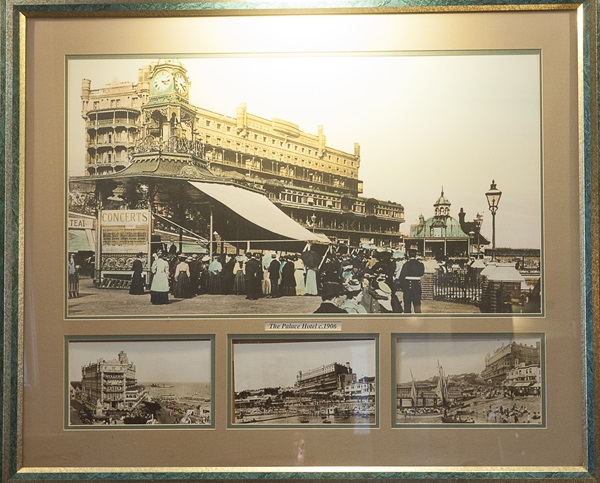
An illustration of Southend Terrace, 1832, showing the mouth of the Thomas.
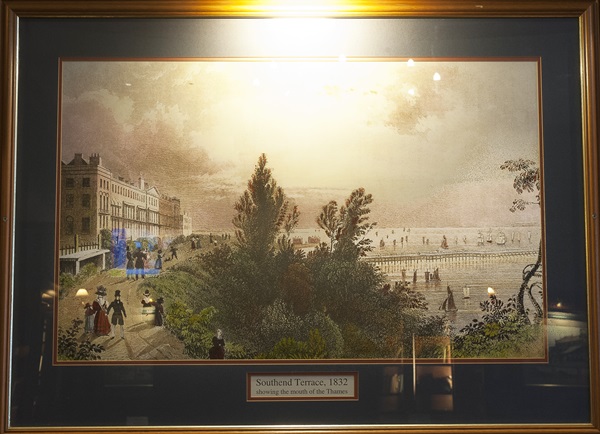
Photographs of Southend Railway Station, c1910.
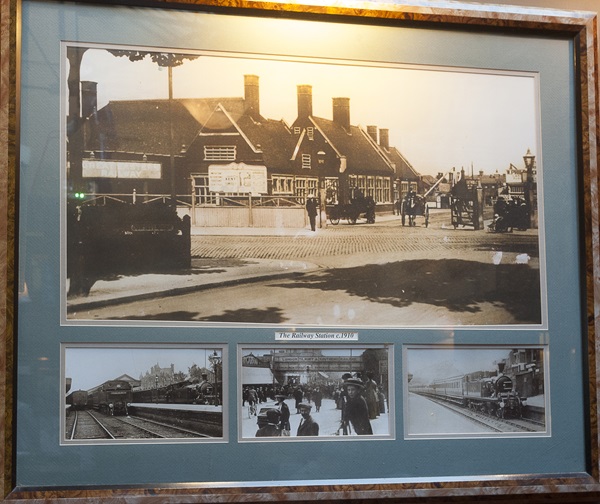
Photograph of Marine Parade, Southend, c1910.
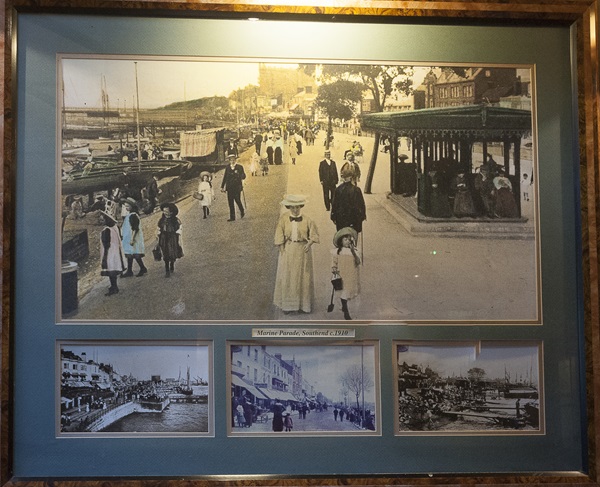
Photographs of High Street, Southend, c1903.

Prints showing pre-bathing costume days –what the well-dressed swimmer wore.
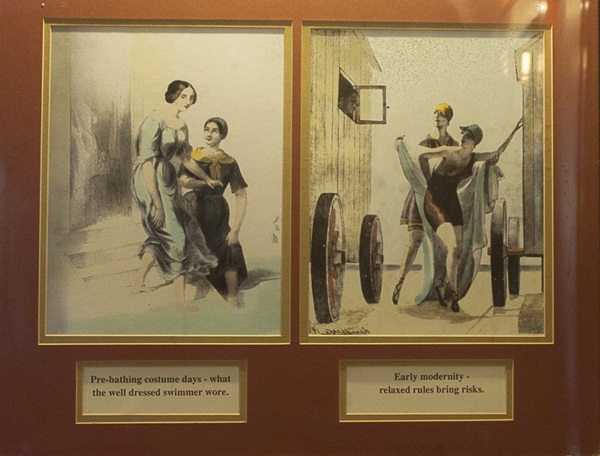
External photograph of the building – main entrance.

Extract from Wetherspoon News Spring 2017.
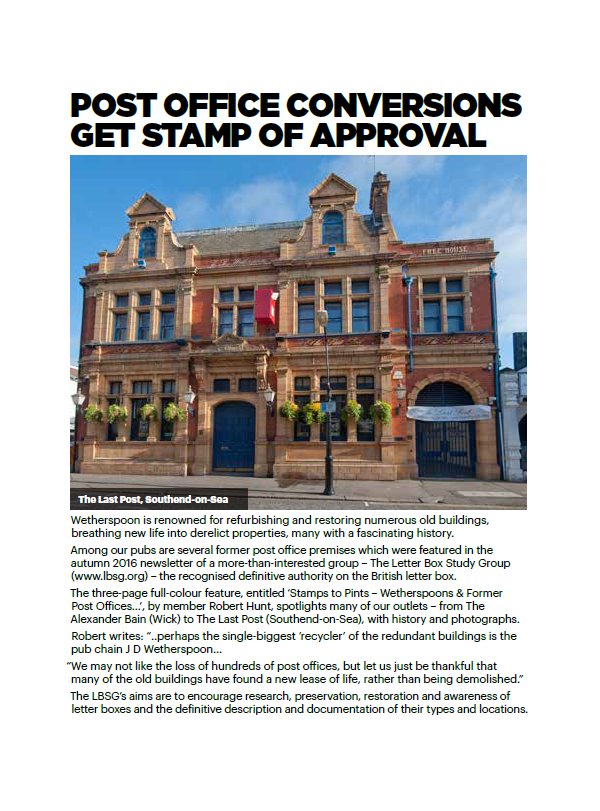
If you have information on the history of this pub, then we’d like you to share it with us. Please e-mail all information to: pubhistories@jdwetherspoon.co.uk